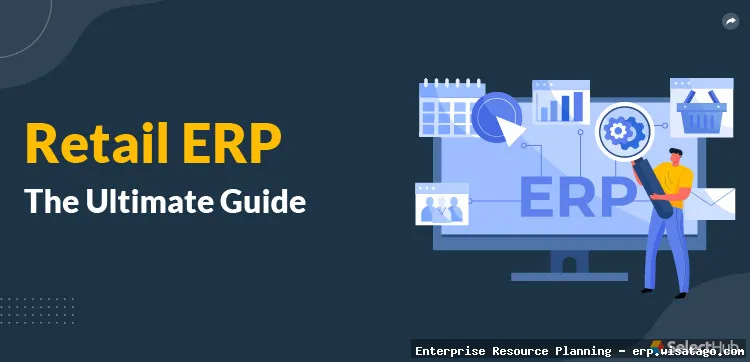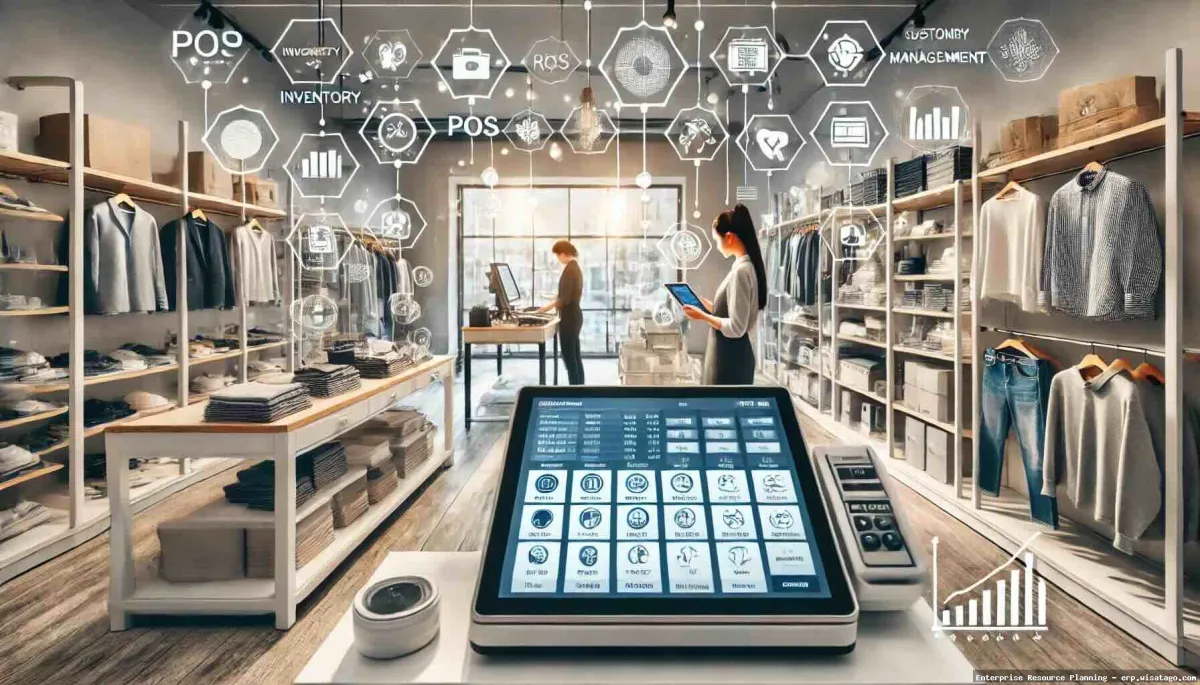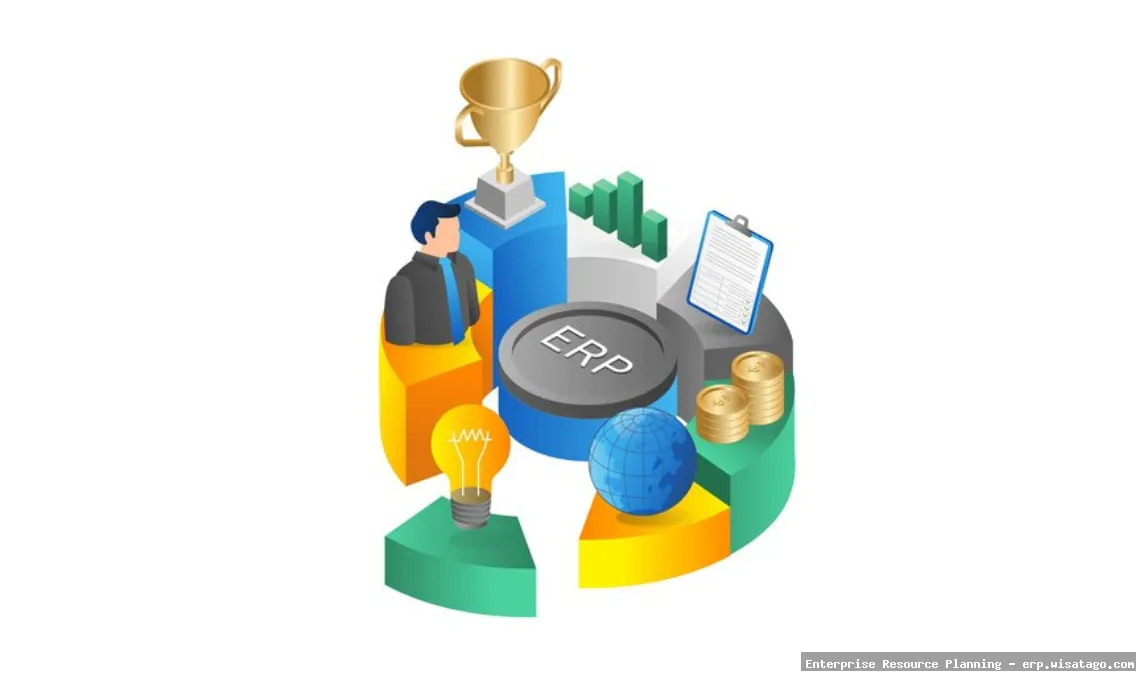Multi-Channel Retail Management Through Enterprise ERP: Complete Guide, Features and Details
The retail landscape has dramatically shifted in recent years. Gone are the days when brick-and-mortar stores were the sole domain of commerce. Today, customers interact with businesses across a multitude of channels – online marketplaces, mobile apps, social media, and, yes, still physical stores. This multi-channel environment presents both immense opportunities and significant challenges for retailers. Effectively managing inventory, fulfilling orders, and providing a consistent customer experience across all these platforms requires a robust and integrated solution.
That’s where Enterprise Resource Planning (ERP) systems come into play. While often perceived as complex and expensive, modern ERP solutions are increasingly accessible and adaptable to the needs of businesses of all sizes. An ERP system designed for multi-channel retail can act as the central nervous system, connecting all your business processes – from procurement and warehousing to sales and customer service – providing a single source of truth and enabling informed decision-making.

This article aims to be your comprehensive guide to understanding how ERP can revolutionize your multi-channel retail management. We’ll delve into the core features of an ERP system, explore the specific benefits it offers in a multi-channel environment, discuss the common challenges of implementation, and provide practical advice on choosing the right solution for your organization. Consider this your roadmap to navigating the world of ERP and unlocking its potential to drive growth and efficiency in your retail business.
Understanding ERP for Multi-Channel Retail
At its core, an ERP system is a software suite that integrates various business functions into a single, unified database. This integration eliminates silos, streamlines processes, and provides real-time visibility across the entire organization. For multi-channel retailers, this means connecting online stores, physical locations, mobile apps, and other sales channels to a central system that manages everything from inventory and orders to customer relationships and financial reporting.
Key Features of a Retail-Focused ERP System
A robust ERP system designed for retail will typically include the following modules:
- Inventory Management: Real-time tracking of inventory levels across all locations and channels, enabling accurate stock control, efficient replenishment, and reduced stockouts.
- Order Management: Centralized order processing, from order placement to fulfillment and shipping, ensuring timely delivery and customer satisfaction.
- Customer Relationship Management (CRM): Managing customer data, interactions, and preferences to personalize marketing efforts, improve customer service, and build loyalty.
- Supply Chain Management (SCM): Optimizing the flow of goods from suppliers to customers, including procurement, warehousing, and logistics.
- Financial Management: Automating financial processes, such as accounting, budgeting, and reporting, providing accurate and timely financial insights.
- Point of Sale (POS) Integration: Seamless integration with POS systems in physical stores, ensuring accurate sales data and inventory updates.
- eCommerce Integration: Connecting with online marketplaces and eCommerce platforms, such as Shopify, Magento, and Amazon, to manage online sales and inventory.
- Reporting and Analytics: Generating comprehensive reports and dashboards to track key performance indicators (KPIs), identify trends, and make data-driven decisions.
Benefits of ERP in a Multi-Channel Environment
Implementing an ERP system can bring a plethora of benefits to multi-channel retailers, helping them to improve efficiency, reduce costs, and enhance the customer experience.
Enhanced Inventory Visibility and Control
One of the most significant benefits is improved inventory visibility. With real-time tracking of inventory levels across all channels, retailers can avoid stockouts, reduce overstocking, and optimize inventory allocation. This leads to lower holding costs, reduced waste, and increased sales. Imagine knowing instantly if you have enough of a specific product to fulfill a large online order, without having to physically check each store location. This is the power of an integrated ERP system.
Streamlined Order Management and Fulfillment
ERP systems streamline the entire order management process, from order placement to fulfillment and shipping. Automated order routing, efficient picking and packing processes, and integration with shipping carriers ensure timely delivery and reduce errors. This leads to improved customer satisfaction and reduced shipping costs. For example, an ERP system can automatically select the closest warehouse to the customer with available stock to fulfill an order, minimizing shipping time and cost.

Improved Customer Experience
By centralizing customer data and interactions, ERP systems enable retailers to provide a more personalized and consistent customer experience across all channels. This includes personalized marketing campaigns, targeted product recommendations, and seamless customer service. Imagine a customer calling customer service with a question about an order placed online. With an integrated ERP system, the customer service representative can quickly access the customer’s order history, preferences, and past interactions, providing a personalized and efficient response.
Data-Driven Decision Making
ERP systems provide a wealth of data that can be used to make informed business decisions. Comprehensive reports and dashboards track key performance indicators (KPIs), identify trends, and provide insights into customer behavior, sales performance, and operational efficiency. This allows retailers to optimize pricing, improve marketing campaigns, and make strategic decisions based on real-time data. For example, analyzing sales data from different channels can reveal which products are most popular online versus in-store, allowing retailers to adjust their inventory and marketing strategies accordingly.
Increased Efficiency and Reduced Costs
By automating processes, eliminating redundancies, and improving visibility, ERP systems can significantly increase efficiency and reduce costs across the entire organization. This includes reduced inventory holding costs, lower shipping costs, improved labor productivity, and reduced administrative overhead. The elimination of data silos and manual processes frees up employees to focus on more strategic activities, such as product development and customer engagement.
Challenges of ERP Implementation
While the benefits of ERP are undeniable, implementation can be a complex and challenging process. It’s crucial to be aware of the potential pitfalls and to plan accordingly.
High Initial Investment
ERP systems can be a significant investment, requiring substantial upfront costs for software licenses, implementation services, and training. However, it’s important to consider the long-term return on investment (ROI) and the potential cost savings that can be achieved through improved efficiency and reduced costs. Cloud-based ERP solutions are often more affordable initially, as they eliminate the need for expensive hardware and infrastructure.
Complexity and Customization
ERP systems can be complex and require customization to meet the specific needs of each business. This can add to the cost and timeline of implementation. It’s important to carefully assess your business requirements and choose an ERP system that can be easily customized and configured. Avoid over-customization, as it can make future upgrades and maintenance more difficult.

Data Migration and Integration
Migrating data from legacy systems to the new ERP system can be a challenging and time-consuming process. It’s crucial to ensure data accuracy and completeness to avoid errors and disruptions. Integrating the ERP system with existing systems, such as eCommerce platforms and POS systems, can also be complex and require careful planning. A phased approach to data migration and integration is often recommended.
User Training and Adoption
Successful ERP implementation requires user training and adoption. Employees need to be trained on how to use the new system effectively and to understand the benefits of the new processes. Resistance to change can be a major obstacle to adoption. It’s important to involve employees in the implementation process and to provide ongoing support and training. Clear communication and strong leadership are essential for driving user adoption.
Choosing the Right ERP Solution
Selecting the right ERP solution is crucial for a successful implementation. There are many ERP vendors and solutions available, each with its own strengths and weaknesses. It’s important to carefully evaluate your business requirements and choose a solution that meets your specific needs.
Choosing the Right ERP Solution for Your Retail Business
Selecting the right ERP system is a critical decision that can significantly impact your business’s future. Here’s a breakdown of key considerations:
Assess Your Business Needs
Before evaluating ERP solutions, conduct a thorough assessment of your business needs. Identify your pain points, challenges, and goals. What are the key processes that need to be improved? What are your reporting requirements? What is your budget? The more clearly you define your needs, the easier it will be to find the right solution. To streamline operations and gain a competitive edge, businesses are increasingly seeking Advanced Erp Solutions to optimize their workflows
Consider Cloud vs. On-Premise
Decide whether you prefer a cloud-based or on-premise ERP solution. Cloud-based solutions are typically more affordable upfront, easier to deploy, and require less IT infrastructure. On-premise solutions offer more control and customization options but require a larger upfront investment and ongoing maintenance. For many small to medium-sized retailers, cloud solutions offer a compelling combination of affordability and functionality.

Evaluate ERP Vendors
Research and evaluate different ERP vendors. Look for vendors with experience in the retail industry and a proven track record of successful implementations. Consider the vendor’s reputation, customer reviews, and support services. Ask for references and speak to other retailers who have implemented the vendor’s solution. Don’t just focus on the software itself; consider the vendor’s ability to provide ongoing support and training.
Request a Demo
Request a demo of the ERP system. This will allow you to see the system in action and to evaluate its features and functionality. Ask questions and explore the system’s capabilities. Ensure that the system can meet your specific business requirements and that it is user-friendly and intuitive. A live demo is invaluable in understanding the user experience and assessing the system’s suitability for your business.
Consider Integration Capabilities
Ensure that the ERP system can be easily integrated with your existing systems, such as eCommerce platforms, POS systems, and accounting software. Seamless integration is crucial for ensuring data accuracy and streamlining processes. Ask the vendor about their integration capabilities and their experience integrating with other systems. Look for open APIs and well-documented integration processes.
Think Long-Term
Choose an ERP system that can scale with your business. Consider your future growth plans and ensure that the system can accommodate your evolving needs. Look for a solution that offers flexibility and customization options. A good ERP system is an investment in your future, so choose wisely.
Conclusion
In the dynamic world of multi-channel retail, an Enterprise Resource Planning (ERP) system is no longer a luxury but a necessity. By integrating all your business processes into a single, unified platform, ERP can provide real-time visibility, streamline operations, enhance the customer experience, and drive profitable growth. While implementation can be challenging, the long-term benefits far outweigh the costs. By carefully assessing your business needs, evaluating different vendors, and planning for user adoption, you can successfully implement an ERP system and unlock its full potential to transform your retail business.
Conclusion
In conclusion, this article has demonstrated the critical role of Enterprise Resource Planning (ERP) systems in effectively managing the complexities of multi-channel retail. By integrating various business functions, from inventory management and order processing to customer relationship management and financial reporting, ERP provides retailers with a centralized platform for streamlining operations, enhancing visibility, and improving decision-making across all channels. The ability to gain a unified view of the customer, optimize inventory levels, and personalize the shopping experience are just some of the benefits that an ERP system brings to the table, ultimately leading to increased efficiency, improved customer satisfaction, and higher profitability. Modern businesses often seek integrated solutions, and ERP offers a way to manage resources more efficiently
.
The modern retail landscape demands agility and adaptability, and a well-implemented ERP system serves as the backbone for achieving these qualities. By embracing the power of ERP, retailers can not only navigate the challenges of multi-channel operations but also capitalize on the opportunities presented by the evolving market. We encourage retailers to carefully evaluate their current systems and consider the significant advantages that an enterprise-grade ERP solution can offer. To learn more about how a tailored ERP system can transform your multi-channel retail business, we invite you to contact us for a personalized consultation and discover the potential for growth and efficiency that awaits.
Frequently Asked Questions (FAQ) about Multi-Channel Retail Management through Enterprise ERP
How can implementing an Enterprise Resource Planning (ERP) system improve my multi-channel retail management and prevent stockouts across different sales channels?
Implementing an ERP system offers significant benefits for multi-channel retail management, particularly in preventing stockouts. An ERP provides a centralized view of inventory across all channels (e.g., online store, physical stores, marketplaces). This visibility allows for real-time tracking of stock levels, demand forecasting, and automated replenishment. The system analyzes sales data from all channels to predict future demand, ensuring sufficient stock is available where and when it’s needed. Furthermore, ERP systems often include features like automated order routing, which directs orders to the warehouse or store with available inventory, minimizing delays and preventing lost sales due to stockouts. By integrating data from all sales channels, an ERP facilitates better decision-making and optimizes inventory levels, drastically reducing the risk of stockouts and improving customer satisfaction.
What are the key features to look for in an ERP system specifically designed for multi-channel retail businesses to manage pricing, promotions, and customer data effectively?
When selecting an ERP system for multi-channel retail, several key features are crucial for effective pricing, promotions, and customer data management. Firstly, look for a centralized pricing engine that allows you to set and manage prices consistently across all channels, while also accommodating channel-specific pricing strategies. Secondly, the ERP should offer robust promotion management capabilities, enabling you to create and schedule promotions that are automatically applied to relevant channels. This includes features like discount codes, buy-one-get-one deals, and loyalty programs. Finally, a comprehensive customer relationship management (CRM) module integrated within the ERP is essential for capturing and managing customer data from all touchpoints. This allows for personalized marketing, targeted promotions, and improved customer service, leading to increased customer loyalty and sales. The ability to segment customers based on purchase history and channel preferences is also highly valuable.
How much does it typically cost to implement an Enterprise Resource Planning (ERP) system for multi-channel retail management, and what are the main factors that influence the total cost of ownership?
The cost of implementing an ERP system for multi-channel retail management can vary significantly, ranging from a few thousand dollars for cloud-based solutions for small businesses to hundreds of thousands or even millions for large enterprises with complex requirements. The total cost of ownership (TCO) is influenced by several key factors. Firstly, the software license fees or subscription costs are a major component. These depend on the number of users, features required, and deployment model (on-premise vs. cloud). Secondly, implementation costs, including consulting, data migration, customization, and training, can be substantial. The complexity of your existing systems and the level of customization needed will impact these costs. Thirdly, hardware and infrastructure costs are relevant for on-premise deployments. Finally, ongoing maintenance and support fees, as well as internal IT resources required to manage the system, contribute to the TCO. Carefully assessing these factors is crucial for budgeting and selecting the most cost-effective ERP solution.
